Bilateral damage to the sexually dimorphic medial preoptic area/anterior hypothalamus of male ferrets causes a female-typical preference for and a hypothalamic Fos response to male body odors
- PMID: 17118411
- PMCID: PMC2265004
- DOI: 10.1016/j.physbeh.2006.10.005
Bilateral damage to the sexually dimorphic medial preoptic area/anterior hypothalamus of male ferrets causes a female-typical preference for and a hypothalamic Fos response to male body odors
Abstract
Previous studies showed that bilateral lesions of the male ferret's preoptic area/anterior hypothalamus (POA/AH), centered in the sexually dimorphic nuclei present in this region, caused subjects to seek out a same-sex male, as opposed to a female conspecific. Male subjects with POA/AH lesions (which were also castrated and given estradiol) displayed female-typical receptive behavior in response to neck gripping by a stimulus male, implying that subjects' approaches to a same-sex conspecific were sexually motivated. We asked whether the effect of POA/AH lesions on males' partner preference reflects a shift in the central processing of body odorant cues so that males come to display a female-typical preference to approach male body odorants. Sexually experienced male ferrets in which electrolytic lesions of the POA/AH caused bilateral damage to the sexually dimorphic male nucleus (MN) resembled sham-operated females by preferring to approach body odors emitted from anesthetized male as opposed to female stimulus ferrets confined in the goal boxes of a Y-maze. This lesion-induced shift in odor preference was correlated with a significant increase in the ability of soiled male bedding to induce a Fos response in the medial POA of males with bilateral damage to the MN-POA/AH. No such partner preference or neural Fos responses were seen in sham-operated males or in other groups of males with POA/AH lesions that either caused unilateral damage or no damage to the MN-POA/AH. Male-typical hypothalamic processing of conspecifics' body odorants may determine males' normal preference to seek out odors emitted by female conspecifics, leading to mating and successful reproduction.
Figures
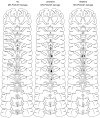
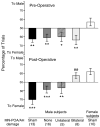
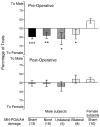
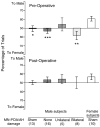
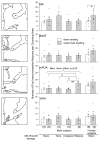
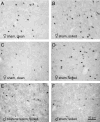
References
-
- Bakker J, Baum MJ, Slob AK. Neonatal inhibition of brain estrogen synthesis alters adult neural Fos responses to mating and pheromonal stimulation in the male rat. Neuroscience. 1996;74:251–60. - PubMed
-
- Baum MJ, Erskine MS, Kornberg E, Weaver CE. Prenatal and neonatal testosterone exposure interact to affect differentiation of sexual behavior and partner preference in female ferrets. Behav Neurosci. 1990;104:183–98. - PubMed
-
- Bressler SC, Baum MJ. Sex comparison of neuronal Fos immunoreactivity in the rat vomeronasal projection circuit after chemosensory stimulation. Neuroscience. 1996;71:1063–72. - PubMed
Publication types
MeSH terms
Substances
Grants and funding
LinkOut - more resources
Full Text Sources

